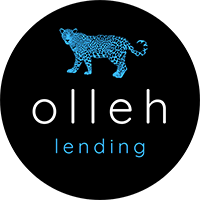Take a glimpse of what could be with Olleh
Our Work
Certain things are instrinsic to our spirit and imprinted on our work: soul and performance. Our performance is grounded in experience, insight and strategy.

Loan Calculators
To help you out we’ve put together a collection of over 20 calculators that will allow you to work through a number of scenarios and help plan your financial situation. Select from our list of savings, tax and loan calculators.
Discover Loan Options
Variable
Standard variable loans are the most popular home loan in Australia. Interest rates go up or down over the life of the loan depending on the official rate set by the Reserve Bank of Australia and funding costs and the individual decisions of each lender. Your regular repayments generally pay off both the interest and some of the principal.
You may also be able to choose a basic variable loan, which offers a discounted interest rate but has fewer loan features, such as a redraw facility and repayment flexibility.
Pros
- If interest rates fall, the size of your minimum repayments will too.
- Standard variable loans generally allow you to make extra repayments. Even small extra payments can cut the length and cost of your mortgage.
- Basic variable loans often don’t come with a redraw facility, removing the temptation to spend money you’ve already paid off your loan.
Cons
- If interest rates rise, the size of your repayments will too.
- Increased loan repayments due to rate rises could impact your household budget, so make sure you take potential interest rate hikes into account when working out how much money to borrow.
- You need to be disciplined around the redraw facility on a standard variable loan. If you dip into it too often, it will take much longer and cost more to pay off your loan.
- If you have a basic variable loan, you may not be able to pay it off quicker or get access to money you have already repaid if you ever need it.
Fixed
The interest rate is fixed for a certain period, usually the first one to five years of the loan. This means your regular repayments stay the same regardless of changes in interest rates. At the end of the fixed period you can decide whether to fix the rate again, at whatever rate lenders are offering, or move to a variable loan.
Pros
- Your regular repayments are unaffected by increases in interest rates.
- You can manage your household budget better during the fixed period, knowing exactly how much is needed to repay your home loan
Cons
- If interest rates go down, you don’t benefit from the decrease. Your regular repayments stay the same.
- You can end up paying more than someone with a variable loan if rates remain higher under your agreed fixed rate for a prolonged period.
- There is very limited opportunity for additional repayments during the fixed rate period.
- There may be significant break costs that you must pay if you exit the loan before the end of the fixed rate period.
Split Rate Loans
Your loan amount is split, so one part is variable, and the other is fixed. You decide on the proportion of variable and fixed. You enjoy some of the flexibility of a variable loan along with some of the certainty of a fixed rate loan.
Pros
- Your regular repayments will vary less if interest rates increase, making it easier to budget.
- If interest rates fall, your regular repayments on the variable portion will too.
- You can generally repay the variable part of the loan quicker if you wish.
Cons
- If interest rates rise, your regular repayments on the variable portion will too.
- Your additional repayments of the fixed rate portion will be limited.
- There may be significant break costs that you must pay if you exit the fixed portion of the loan early.
Interest Only
You repay only the interest on the amount borrowed usually for the first one to five years of the loan, although some lenders offer longer terms. Because you’re not also paying off the principal, your monthly repayments are lower. At the end of the interest-only period, you begin to pay off both interest and principal. These loans are especially popular with investors who plan to pay off the principal when the property is sold. This strategy is usually reliant on the property having achieved capital growth before it is sold.
Pros
- Lower regular repayments during the interest only period.
- If it is not a fixed rate loan, there may be flexibility to pay off, and possibly redraw, the principal at your convenience during the interest-only period.
Cons
- The overall cost of the loan is likely to be significantly higher.
- At the end of the interest only period you have the same level of debt as when you started.
- If you’re not able to extend your interest-only period your repayments will increase at the end of the interest-only period.
- You could face a sudden increase in regular repayments at the end of the interest-only period.
Line of Credit
You can pay into and withdraw from your home loan every month, so long as you keep up the regular required repayments. Many people choose to have their salary paid into their line of credit account. This type of loan is good for people who want maximum flexibility in their access to funds.
Pros
- You can use your income to help reduce interest charges and pay off your mortgage quicker.
- Provides great flexibility for you to access available funds.
- Simplifies your banking into one account
Cons
- Without proper monitoring and discipline, you won’t pay off the principal and will continue to carry or increase your level of debt.
- Line of credit loans usually carry higher interest rates than a standard variable mortgage.
Introductory/Honeymoon
Originally designed for first-home buyers, but now available more widely, introductory loans offer a discounted interest rate for the first 6 to 12 months, before the rate reverts to the usual variable interest rate.
Pros
- Lower regular repayments for an initial ‘honeymoon’ period.
Cons
- Loans may have restrictions, such as no redraw facilities, for the entire length of the loan.
- When the honeymoon rate period ends a homeowner may be locked into an interest rate that is not as competitive as elsewhere.
- Some banks may charge early termination fees if you decide to switch to a new lender.
Low Doc
Popular with self-employed people, these loans require less documentation or proof of income than most, but often carry higher interest rates or require a larger deposit because of the perceived higher lender risk. In most cases you will be financially better off getting together full documentation for another type of loan. But if this isn’t possible, a low doc loan may be your best opportunity to borrow money.
Pros
- Lower requirement for evidence of income.
Cons
- You will probably pay higher interest than with other home loan types, or may need a larger deposit, or both.
Say Hello
Begin your loan discovery process with Olleh. Whatever your circumstances, we will look for a loan that’s right for you, not the lender. Give us a call today!


Say Hello
Give us a call on 07 3396 0123 or send us a message below!

